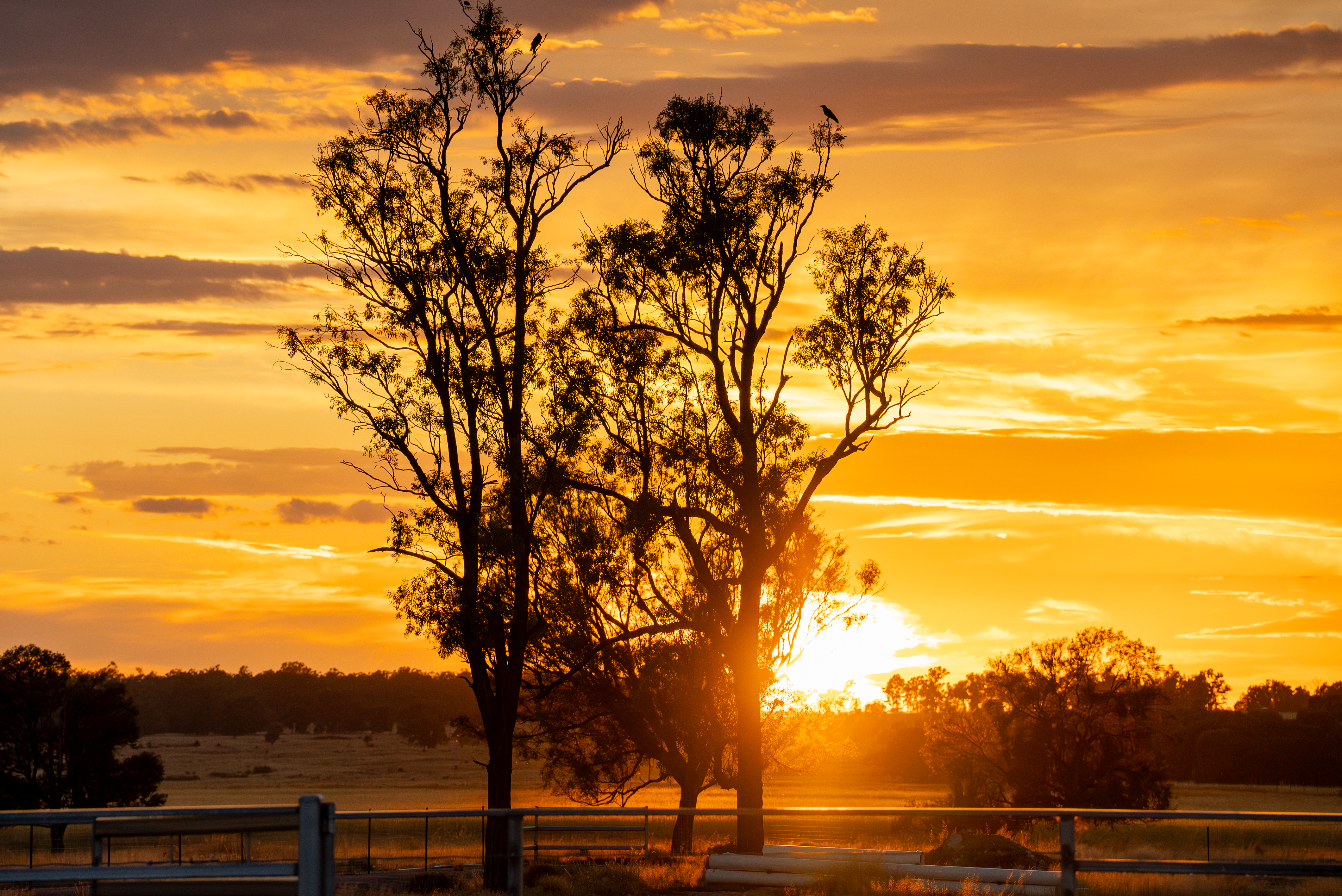Feedlots, red meat and secure water assets underpin steady farmland outlook for 2026
Australian farmland values are tipped to increase a “modest amount” in 2026 as the rural real estate sector continues to consolidate.
3 min read
 Kylie Dulhunty
:
Jul 3, 2025
Kylie Dulhunty
:
Jul 3, 2025

Australia’s rural property market has reached an “inflection point” where prices have stopped their rapid rise, but lower listing volumes have left buyers with fewer options.
Ray White Chief Economist Nerida Conisbee described the market as in a stalemate.
“This holding pattern is likely to continue for a while longer, however ongoing interest rate cuts are likely to create more opportunities for both buyers and sellers,” she said.
With the Reserve Bank of Australia set to make its next interest rate decision on July 8, Ms Conisbee said how aggressively the bank cut rates, and how quickly agricultural commodity prices responded to global economic conditions, would influence the depth of the shift.
“Ongoing geopolitical tensions and supply disruptions globally continue to support agricultural commodity prices, which should underpin farmland values even as transaction volumes recover well before prices resume their upward trajectory,” Ms Conisbee noted.

In recent months the Australian farmland price boom of 2021 and 2022 has hit the brakes, Ms Conisbee said, hitting a plateau of about $9,600ha.
“Where 2021 and 2022 delivered annual growth rates of around 25%, 2024 managed just 2% nationally,” she said.
“It's a dramatic deceleration that signals rural property markets are entering a new phase characterised by regional divergence rather than uniform national growth.
“While national figures show flattening, state-level data reveals the Australian agricultural land market is fracturing along regional lines.

“Western Australia bucked the national trend with robust 18.7% growth in 2024, while NSW experienced a sharp 24.4% correction that wiped out much of its recent gains.”
Ms Conisbee said Tasmania had the highest rural land prices at more than $18,000ha, while the Northern Territory recorded a bit over $5000ha.
She said prices also varied greatly according to land use.

“Dairy farming, traditionally one of Australia’s most stable rural sectors, experienced extreme volatility with growth rates ranging from plus 83% in Tasmania to minus 45% in South Australia,” Ms Conisbee said.
Colliers National Director of Transaction Services and Agribusiness Jesse Manuel said recent rain had brought some “very welcome relief” to some regions of South Australia that had previously been parched.
“Such conditions have caused a slowdown in properties coming to market, while many would-be buyers have also been preoccupied with managing their own businesses in these challenging times,” he said.
Mr Manuel said there had been better rainfall across southern South Australia and Victoria in recent weeks and he tipped higher transaction activity in spring as livestock prices increased.
“As for northern Australia, there’s no slowing down and the market seems to be really pulling out of what was a stand-off between buyers and sellers in 2024 around price expectations,” he said.
“Now we’re seeing some very buoyant activity from family operators, corporate entities and institutional investors.”
From a cropping perspective, Mr Manuel said there was strong enquiry for large-scale opportunities in Victoria’s Wimmera through to the Liverpool Plains and Moree in NSW.
“(There’s) an emerging pool of buyers seeking opportunities in the west in regions like Esperance,” he said.
“Being close to a good labour source is important in this day and age and this is driving decisions in Australian age more than ever before.”
Mr Manuel also tipped buyers would continue to gravitate towards reliable rainfall areas.
“I think the high rainfall regions of Victoria, Tasmania and South Australia are going to attract solid interest once seasonal conditions return to normal,” he said.
LAWD Senior Director Col Medway said the market had been “two speed”.
“Obviously North of Dubbo, up into Queensland and Northern Australia is having a wonderful season,” he said.
“On the back of the prospects for sheep and cattle prices and a large winter crop going in, confidence in that part of the East Coast is certainly very strong.
“That tempers a bit as you head south, although the rain has filled in a bit and we could largely say large parts of southern NSW and into Victoria have had their break.
“Unfortunately, the Western District and South Australia probably haven’t been as lucky.”
Mr Medway said LAWD had a number of South Australian properties ready to go to market, but they were waiting for seasonal conditions to improve before launching.
“Experienced buyers know what they’re looking at, and quality is quality regardless of season, but I think it’s natural for people … to want to present their property in the best possible light,” he said.
Elders General Manager of Farmland Agency and Water Mark Barber said buyers were taking a little longer to make decisions, but quality properties in areas where favourable seasonal conditions were evident were selling well, particularly those able to produce an operating return quickly.
“Turn-key operations that are able to produce a cash yield quickly are certainly being favoured,” he said.
“Anything that needs a bit of work and development is taking longer to get away.”
Mr Barber said Australia had weathered the turmoil of the US tariffs and was also seen as a safe haven for capital and trading.
“Australia’s probably going to come out pretty well from that and we’re seen as a secure, low-risk country to trade with,” he said.
“So, I think that plays into our favour.
“I think where there is a bit of volatility in international markets, Australia will attract more capital from overseas investors, and Australian family farms, where they’ve had a reasonably good season, are still in good order.”
Kylie Dulhunty is a journalist with more than 20 years experience covering everything from court to health. Today, Kylie loves nothing more than turning market trends, industry insights and epic property sales - residential, rural and commercial into captivating stories.
Posts By Tag
.jpg)
Australian farmland values are tipped to increase a “modest amount” in 2026 as the rural real estate sector continues to consolidate.
.png)
Australia’s biggest farm sales of 2025, as reported on by AuctionsPlus, delivered another year of blockbuster rural transactions, led by the roughly...

Each week, we take the pulse of rural property - from sales data to who’s making headlines. Check out this week's report from Kylie Dulhunty.